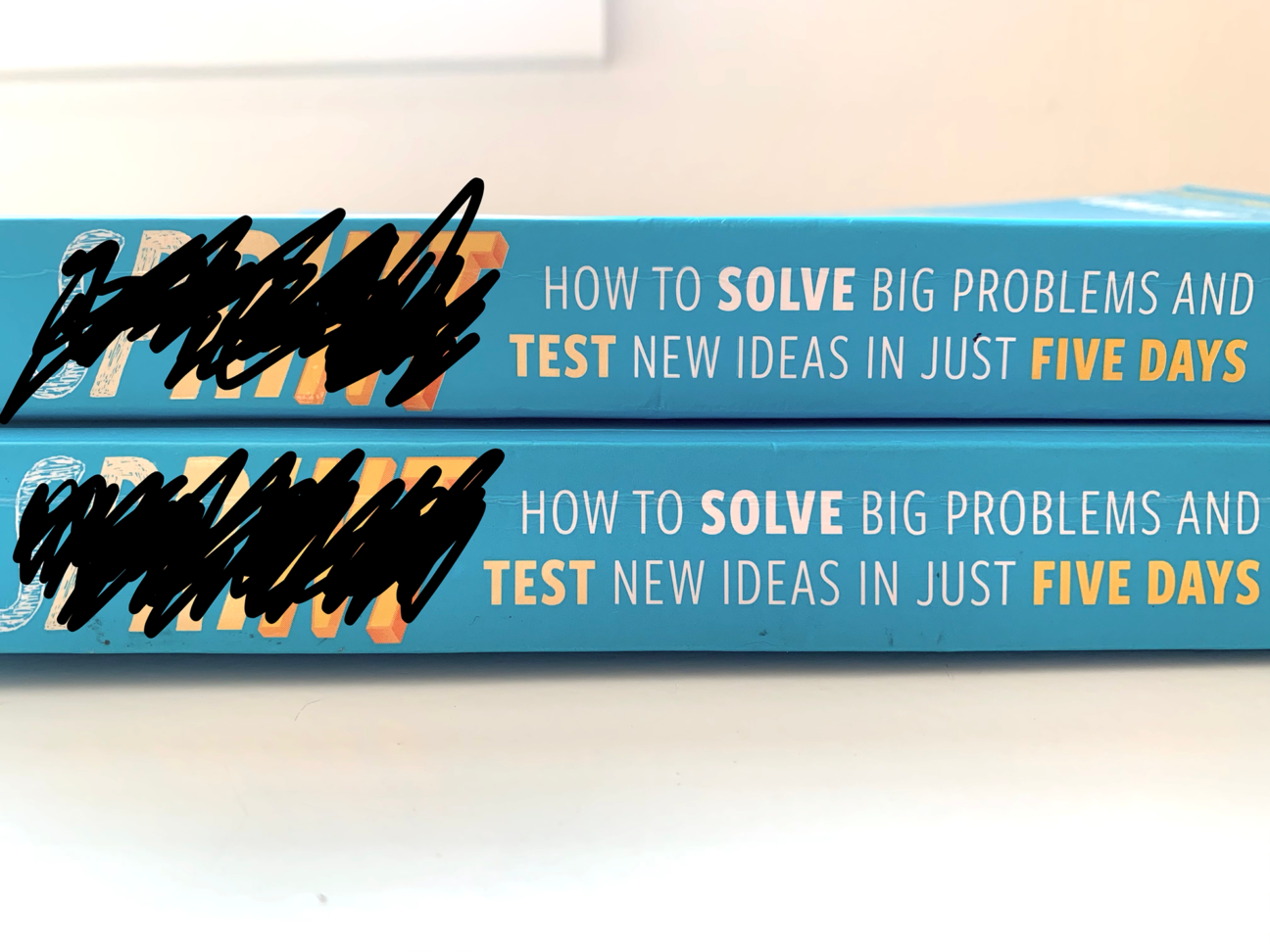In the recent months I have heard a lot of contrasting opinions about whether Design Sprints are valuable or not. This blog post won’t be about defending or talking too much on the pros and cons, but more about pointing out what I find are the key elements of the 5-day workshop that make it successful.
In the last year, I have facilitated quite a few Design Sprints, for different clients, and on different stages of their product development process. The most challenging and rewarding ones have been those where – together with my colleagues James and Håkan – we’ve had to create a “custom sprint” for a client in Sweden, in order to apply it to strategic and organisational challenges. In these cases, the outcome has not been digital, the test users have been remote around the world, and sketching and storyboarding days have been about creating initiatives and action plans to be implemented on a global level.
The biggest learnings from those sprints have been that, even though the structure might not follow the exact Google Design Sprint described in the book, there are some elements of the process that should remain untouched:
-
The right team.
-
Organised discussions.
-
Common understanding of the problem.
-
A structured and time-framed process.
A good combo
These are key principles that make the workshop so valuable, and the ones that I will try to implement in any type of workshop that I facilitate or are involved in; whether the length is 2 hours, or it a 2-week set of workshops:
-
The right team: Bring relevant stakeholders in the same room, the decision makers and the people that will be involved in process through it’s different stages. It is crucial to understand the challenge/opportunity from different perspectives and to start any project with clear objectives that are set by the team. This brings a sense of ownership that helps making the outcome more successful.
-
Organised discussions: To reach consensus within a large group can take weeks or months, and sometimes even whole projects might be left hanging because of the lack of ownership, organisation and decision making.
The key is to find a balance between individual work and group decision making.– Once the right team is inside a room, each of them gets time to work or brainstorm individually, to write their ideas down, present them to the group – avoiding discussions as much as possible – and then, in an organised way, the team members get to choose the ideas or solutions they like best. –
-
Common understanding of the problem: The key to a good project is a good start. With the right team in the room we are already one step ahead as all the participants will hear the same information and give input based on the common understanding of the goals and challenges. This helps smooth the process of implementation when the participants go back to their day-to-day work.
-
Structured and time framed: The main objective of every workshop- no matter its length- should be to get closer to an outcome. The objective is not to fail fast, but learn fast, and the only way of doing that is by focusing on the tangible. Reduce the discussions, make decisions, disagree and commit. Set a timer and a goal for the end of the day (s), stick to the time and make a backlog of the ideas that didn’t get through, but don’t waste time discussing the “why not’s”. ´
Whether we decide to call our “customised sprints” Design Sprints or something else, it has been an eye-opener to me to be able to reach the end of an intense working week, with a tested prototype and a list of next steps, starting by opening the scope moving discussions forward by focusing on getting started rather than being right.
What happens after the sprint and the way we handle expectations is another story, maybe another blog post :-).
